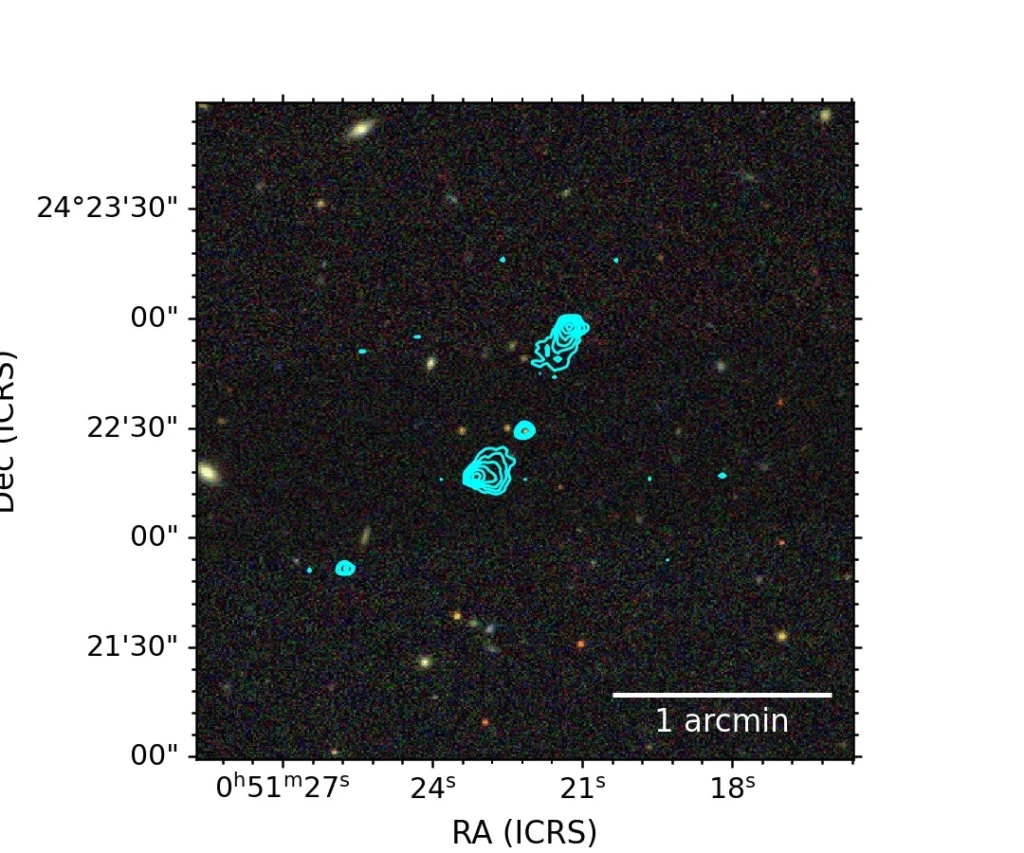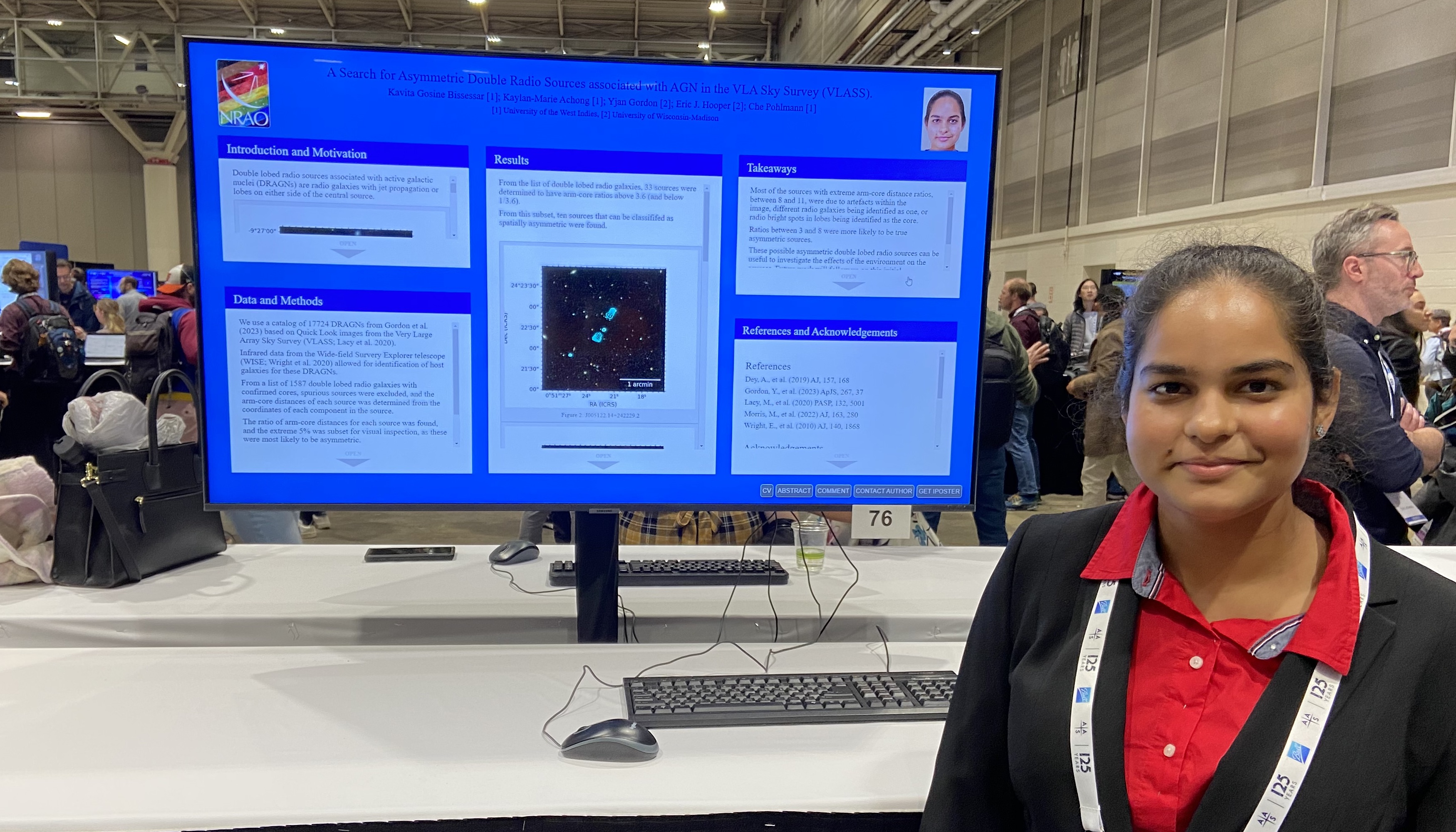Active supermassive black holes often produce powerful jets of ionized gas that stream away from their host galaxies. These jets can be seen by radio telescopes as radio lobes. Active galaxies can have one or two radio lobes, and when they have two they are known as Double-lobed Radio sources associated with Active Galactic Nuclei, or DRAGNs. The jets of most DRAGNs are symmetrical, but a few are not. These asymmetrical DRAGNs could tell us a great deal about galaxies and their surrounding environment, but identifying them can be a challenge.
University of the West Indies student Kavita Gosine Bissessar wanted to find these asymmetrical DRAGNs, so she started with a catalog of 17,724 DRAGNs captured by the Very Large Array Sky Survey (VLASS). She combined this with infrared data from the Wide-field Infrared Survey Explorer (WISE) to identify their host galaxies. From this Kavita found that 1,587 of them had confirmed galactic cores.

But to find out which of these were asymmetrical, Kavita had to comb through them by hand. She started by measuring the arm-core distance ratio since DRAGNs with larger ratios are more likely to be symmetrical. She found that 33 of them had ratios greater than 3.6. Interestingly, she found that those with the largest ratios appeared asymmetrical, but were actually false positives. Some were actually two separate galaxies, while others had bright radio cores misidentified as a lobe. Kavita found that DRAGNs with arm-core distance ratios between 3 and 8 had the greatest chance of being true asymmetrical DRAGNs.
This result can help astronomers find galaxies with asymmetric radio lobes more easily. In the future Kavita would like to study the environments of these galaxies to see how that might affect galactic lobe symmetry.






